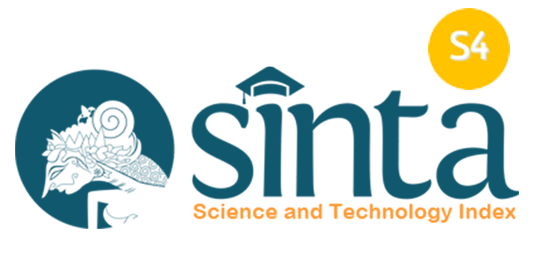Improved Information Literacy of Elementary School Students About Living Pharmacies Through Information and Communication Media (ICT)
Abstract
Keywords
Full Text:
PDFReferences
Abdiyani, S. (2008). Keanekaragaman jenis tumbuhan bawah berkhasiat obat di dataran tinggi Dieng. Jurnal Penelitian Hutan dan Konservasi Alam, 5(1), 79-92.
Abidin, Y. (2017). Developing literacy learning model based on multi literacy, integrated, and differentiated concept at primary school. Jurnal Cakrawala Pendidikan, 36(2), 156-166.
Ahmad, F. A. (2012). Analisis penggunaan jamu untuk pengobatan pada pasien di klinik saintifikasi jamu hortus medicus Tawangmangu tahun 2012. Agrologia, 6(1), 13-15.
American Library Association. (1989). Letters. College and Research Libraries, 50(1), 99-108.
Council of Australian University Librarians (CAUL). (2001). Information literacy standards. Australian Academic and Research Libraries, 32(1), 16-25.
Halidi, H. M., Husain, S. N., and Saehana, S. (2015). Pengaruh media pembelajaran berbasis TIK terhadap motivasi dan hasil belajar IPA siswa kelas V SDN model terpadu Madani Palu. Mitra Sains, 3(1), 53-60.
Handajani, A., Roosihermatie, B., and Maryani, H. (2010). Faktor-faktor yang berhubungan dengan pola kematian pada penyakit degeneratif di Indonesia. Buletin Penelitian Sistem Kesehatan, 13(1), 21301.
Harjawinata, M. B., Hardhienata, S., and Qur'ania, A. (2015). Aplikasi pencocokan jenis tanaman obat berdasarkan penyakit berbasis web. Jurnal Online Mahasiswa (JOM) Bidang Ilmu Komputer/Informatika, 3(3), 12-21.
Lubis, M. A., Azizan, N., and Ikawati, E. (2020). Persepsi orang tua dalam memanfaatkan durasi penggunaan gadget untuk anak usia dini saat situasi pandemi Covid-19. Jurnal Kajian Gender Dan Anak, 4(1), 63-82.
Nurmayulis, U., and Hermita, N. (2015). Potensi tumbuhan obat dalam upaya pemanfaatan lahan pekarangan oleh masyarakat desa Cimenteng kawasan Taman Nasional Ujung Kulon. Agrologia, 4(1), 15-18.
Syarif, P., Suryotomo, B., and Soeprapto, H. (2015). Diskripsi dan manfaat tanaman obat di pedesaan sebagai upaya pemberdayaan apotik hidup (studi kasus di Kecamatan Wonokerto). Pena Jurnal Ilmu Pengetahuan dan Teknologi, 21(1), 23-45.
DOI: https://doi.org/10.17509/ajsee.v2i3.38667
Refbacks
- There are currently no refbacks.
Copyright (c) 1970 Universitas Pendidikan Indonesia

This work is licensed under a Creative Commons Attribution-ShareAlike 4.0 International License.














